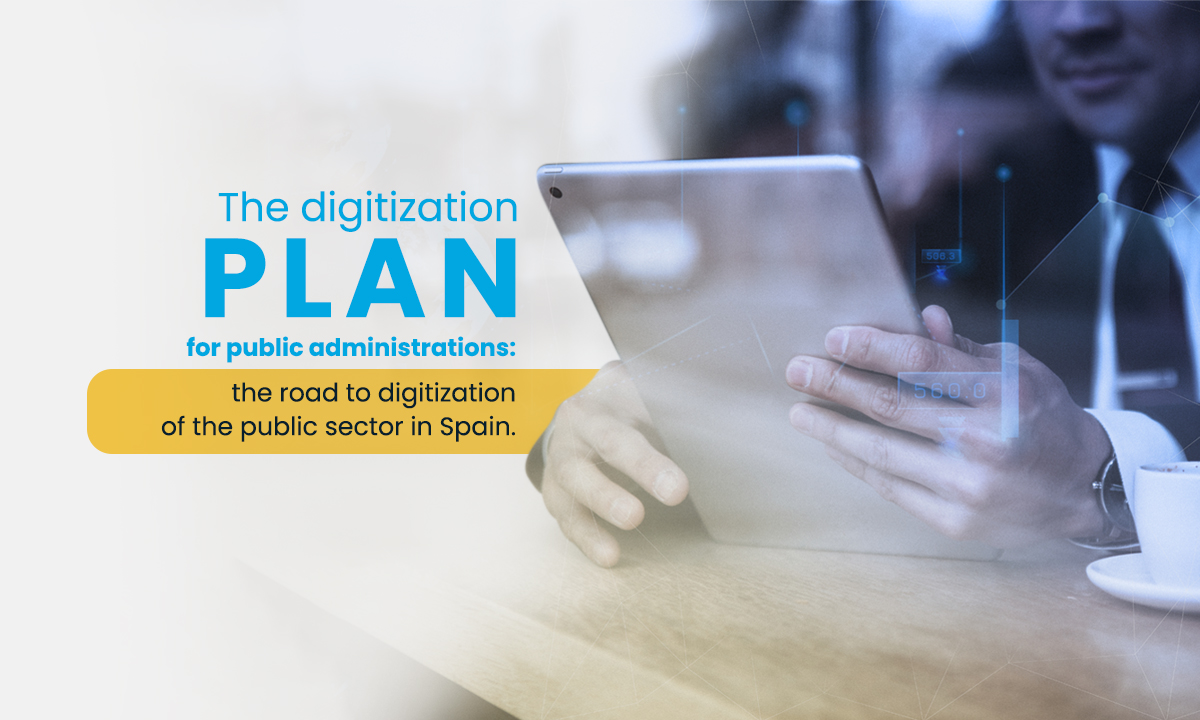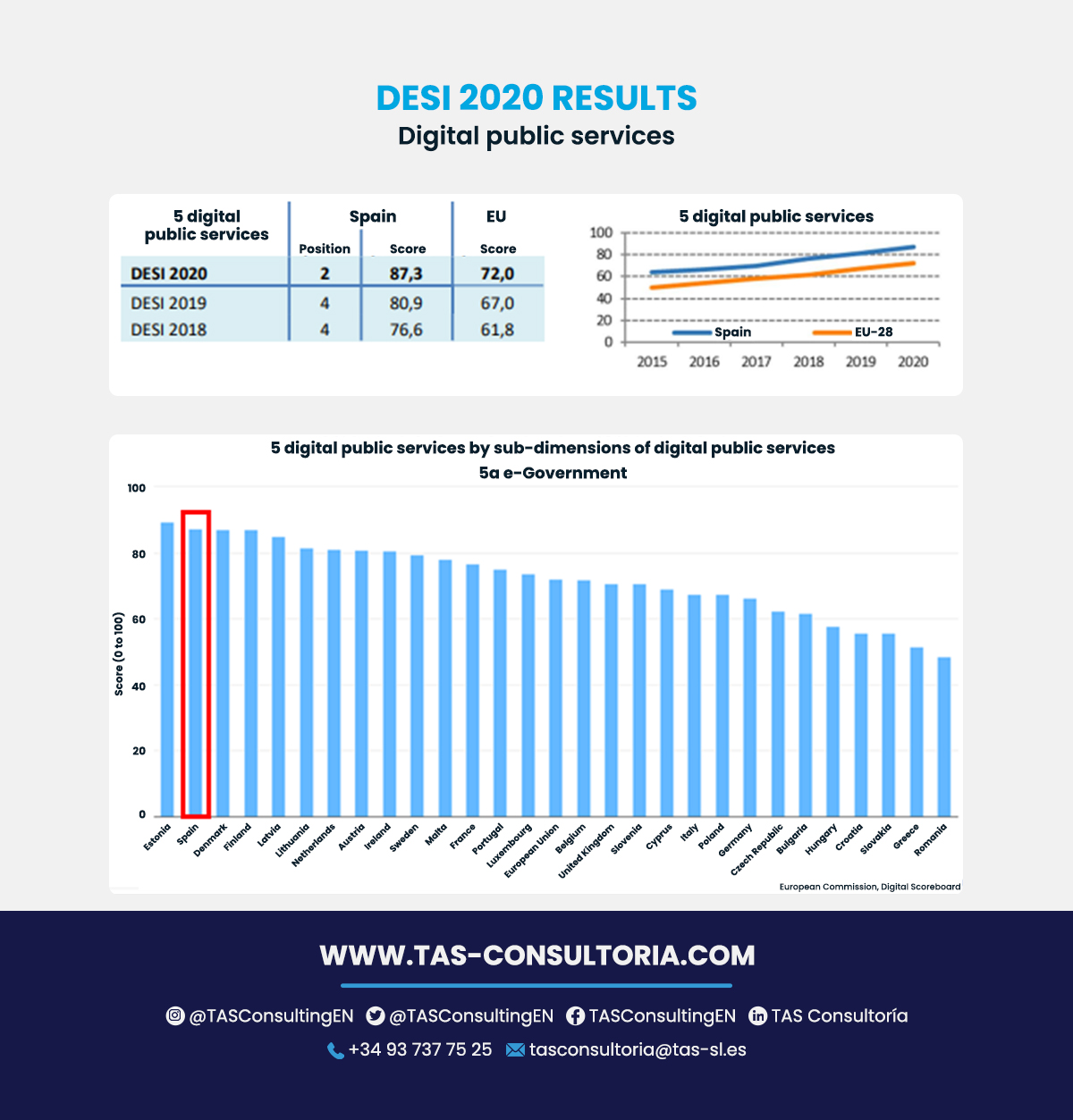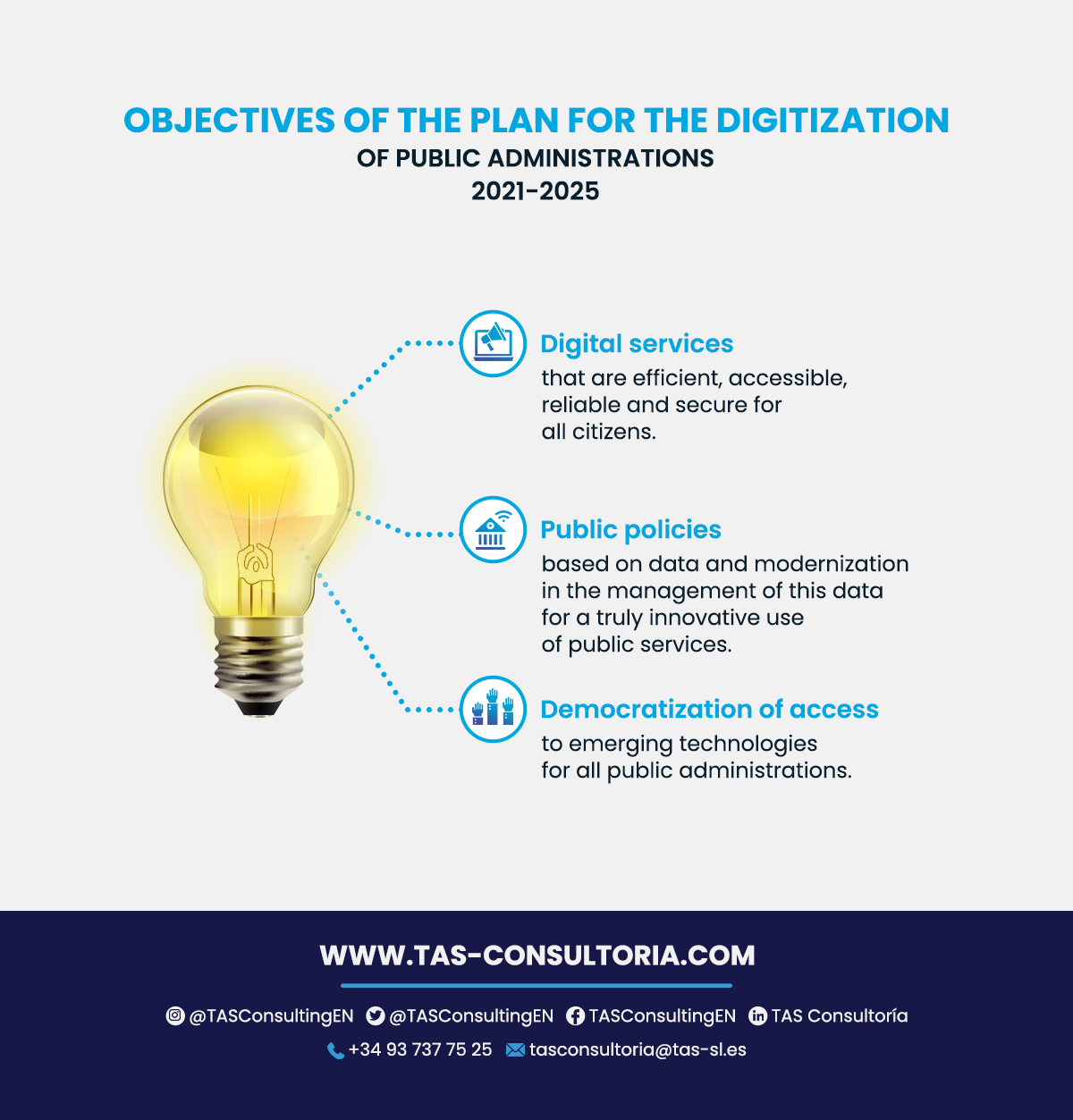The Spain Digital Agenda 2025 proposed ten axes of reform and investment that would relaunch economic growth, reduce inequality, increase productivity and take advantage of new technologies. In the fifth is the digital transformation of public services and what are the steps to offer significant improvements to citizens. Do you want to know more about the digitization of the public sector in Spain? Here we will tell you all about it, let’s get to it!
What is the public sector?
The public sector of a country is all the institutions and administrative bodies that operate with a public budget or are managed directly or indirectly by the State.
In other words, it is the segment of the economy that is under the control of the state and therefore aims at satisfying collective interests rather than profit. In fact, it is precisely this last aspect that differentiates it mainly from the private sector.
The public sector and its administrations serve so that citizens can live as citizens, so that society can function properly and so that it has the instruments and resources that allow them to live together in a fair and safe manner.
For this reason, the public sector is of central importance in maintaining the institutional framework that materializes the initiatives of those in power. A society without a public administration is a society that is disjointed and without the capacity to manage the will of its citizens.
Why is the digital transformation of the public sector necessary?
In general terms, citizens are demanding increasingly personalized services that are simpler to use and more adapted to the particular needs of each person. Not only that, but there are also increasing demands for higher levels of safety and respect for the environment.
All of the above requires major changes in the way public services are provided and in the infrastructures that support them.
It is important for an advanced and democratic society to have an agile Public Administration that is capable of managing public affairs with transparency and efficiency. The world is changing and administrations do not always do so at the same pace, which could ultimately prove to be a brake on development.
Therefore, to avoid this situation, it is necessary to change the approach, structures and practices that have become obsolete and that prevent administrations from responding to citizens as they need to.
You may also be interested in: Digital Spain 2025: Basic Guide
The Public Administration Digitalization Plan 2021-2025
The Public Administration Digitalization Plan 2021-2025 will represent a definitive leap forward in improving the efficiency and effectiveness of the Public Administration.
In order to be able to respond to the main challenges of the sector’s driving areas, the digitalization plan aims to improve the efficiency of the administrations as a whole, so that they can guarantee the sustainability of investments.
In addition, the plan organizes the steps that the Public Administration must take in order to advance in the improvement of electronic services, citizen services, the modernization of its infrastructures and the integration of new technologies for the execution of public policies.
Although according to the 2020 Digital Economy and Society Index (DESI), Spain is well positioned in terms of e-Government development, it still needs to improve and adapt its processes to make them much more efficient and accessible to all citizens. Even so, it needs to improve and adapt its processes to make them much more efficient and accessible to all citizens. And it must modernize its infrastructures and take advantage of the benefits offered by new technologies.
Context
The Public Administration digitalization plan is one of the main elements of “Component 11 – Modernization of Public Administrations in Spain” belonging to the Recovery, Transformation and Resilience Plan.
This plan plans to mobilize a total public investment of 3.165 billion euros over the next three years. Of this, at least 970 million will be earmarked specifically for the autonomous communities and local corporations to promote the development of digital public services throughout the territory.
1,205 million will be invested in projects with a high impact on the digitization of the public sector, so that they will be distributed among the different areas of action.
With regard to healthcare, the aim is to strengthen interoperability, which deals with the management of data corresponding to the different Autonomous Communities. Thus, it will be able to improve the service, apply Artificial Intelligence to data analysis and deal much better with health emergencies.
For the judicial area, the Ministry of Justice has developed the Justice Plan 2030 to improve digital services for citizens, businesses and groups and to advance on the path to achieving sustainable judicial management over time.
Finally, with regard to employment, the information systems that support the unemployment benefits system and activation policies for employment will be improved. All, of course, will be with adequate guarantees of the protection of citizens’ rights and the correct handling of these data by the data companies.
Objectives
When it comes to objectives, the public sector digitization plan has many. In general terms, it seeks to improve the accessibility of digital public services to citizens and businesses. It also aims to overcome the current digital divide and promote the efficiency and effectiveness of public employees.
But, as we said, this is only in general terms. Below, we will tell you what their objectives are:
1. Digital services that are efficient, accessible, reliable and secure: the aim is to develop digital public services that are much more inclusive, personalized, proactive, efficient and of high quality for the entire population.
2. Data-driven public policies and modernization of data management: transforming public administration into a more modern and data-driven public administration, where citizens’ information is used efficiently to create policies that are aligned with the economic, social and territorial reality of Spain. In this way, it will be possible to create a truly innovative experience in the use of public services.
3. Democratization of access to emerging technologies: it will allow the development of common assets, infrastructures and services that allow all Public Administrations to participate in the digital transformation that is being brought about by the arrival of new technologies such as Artificial Intelligence or Big Data.
You may also be interested in: What’s new in the GEM Spain 2021-2022 Report?
A 21st century administration: the goal
In the 21st century, the State cannot afford to be the same as it once was. The reality is that society has changed at a rapid pace. And even with the improvements that have been made, we still have an administration with a somewhat archaic structure.
For this reason, the Public Administration Digitalization Plan includes reforms and investments that will make it possible to improve both administrative procedures and the digital skills and resources available.
The public sector of the different public administrations in Spain require a change in the digital field. A program such as this one will also be able to support the digital transformation of regional and local administrations in a way that is consistent with the guidelines set by the State Administration in force during this period.
Likewise, the Plan will increase the efficiency of the Public Administrations through the efforts of shared services and means, which will generate a synergic union and significant cost savings that will ensure the sustainability of the investments made.
Thus, there will be more means and instruments for achieving the objectives of resilience, environment, climate change, public health, digital transition and territorial cohesion.
In addition, and in synchrony with the Connectivity and Digital Infrastructure Plan, better digital connectivity will be achieved in public centers, as well as support for the improved provision of new services such as telemedicine, which is the aim of the Digitalization Plan.
You may also be interested in: What is the level of digitalization of companies in Spain in 2022?
Want to keep enjoying more content like this? Subscribe to our blog at TAS Consultancy where we will keep you up to date on current affairs in Spain with our blogs, find out much more than just the latest news from the Spanish public sector! Also, if you are a citizen or foreigner and want to know about the current situation in the territory, let us know in the comments.
If you have any doubts or questions that you want to solve, do not hesitate to contact us through our website, our professionals will be happy to assist you.







Your email address will not be published .
Required fields are marked with *